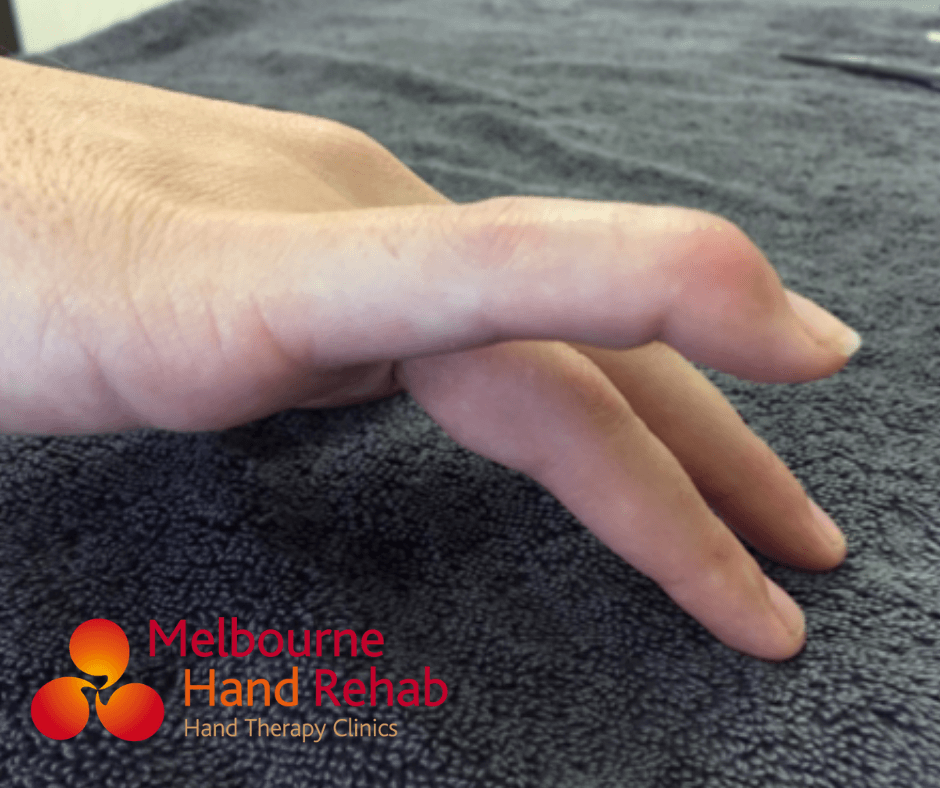
17 Jan Nailing the discussion on mallet fingers.
What is Mallet Finger?
Mallet finger is an injury to the tip of the finger that is obvious by the inability to straighten the tip your finger. The tendon that extends the finger is damaged and there may be a bit of bone fractured as well. This is very common in sports when a ball hits the tip of a finger.
There are many ways to treat mallet finger. I reckon I’ve seen them all over the years, but today’s research and a lot of experience has led us to the best treatment. Splinting with custom made, off the shelf, aluminium, plastic, the old paddle pop stick taped to the finger? Is surgery necessary? Where do you start?
Today’s research is recommending that custom made thermoplastic splints have the highest rates of success. Custom splints provide the best results and avoid an extension lag (a permanent bend of the tip of the finger without the ability to straighten). Often, off the shelf splints will hold the finger in slight flexion, causing a permanent extension lag. This can be unsightly for patients and leaves the finger prone to future injury. Current research also rejects off the shelf orthosis due to skin maceration and lasting skin damage. Your hand therapist will know the exact position and type of splint you will need.
What do I do first?
If you have a fingertip that is not straightening, get an x-ray. An x-ray will show if there is a fracture of the bone. This is important in treatment. See your hand therapist with your x-rays so we can assess it. If there is a fracture with more than 30% of the articulation, or if the bone fragment is displaced, a surgical consult will be recommended. Your hand therapist will be able to guide you in the right direction. A splint will be fabricated for positioning prior to you seeing a surgeon (if necessary) to avoid further damage.
Do I need surgery or therapy?
There are clear signs that will indicate to your hand therapist if you need a surgical consult. On the other hand, you may be able to be managed without surgery. This generally consists of splinting the finger in extension for 6 weeks. This will allow any bone fractures to heal, allow the tendon to heal, and allow the tendon to tighten back up to hold the fingertip straight. It is important to manage your recovery with your hand therapist to be sure that the splint is right and there is no skin breakdown. After your time of splinting you will be educated on how to regain motion of your fingertip. Your joint will be quite stiff and a little sore after 6 weeks of immobilisation. Exercises and advise on how to manage your finger with sports and returning to work will be explained.
Things to remember.
The sooner you treat your injury, the better the results. It is possible for permanent deformity of the joint if mallet finger is not addressed quickly or correctly. Get an x-ray and see your hand therapist. The timeline for healing seems long, but you can have a full recovery if managed correctly.


